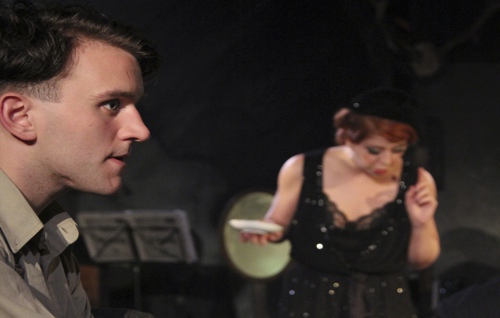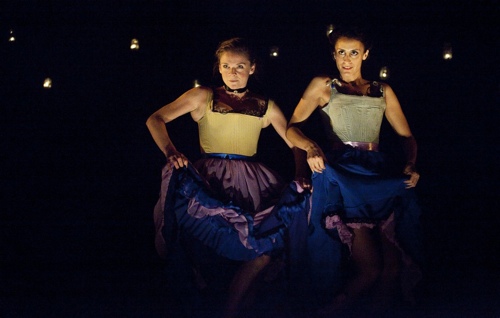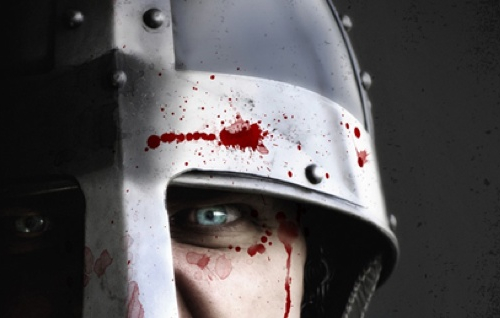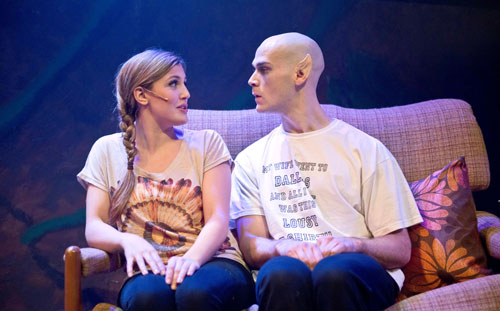
I Am A Camera by John Van Druten premiered in 1951 on Broadway, inspired by Christopher Isherwood’s novel Goodbye to Berlin. Set in Nazi Germany, the play provided a springboard for the creation of the musical Cabaret (1966). I Am A Camera seeks to depict the headache and heartache that accompanies displacement, of foreigners in a different land, drifting, yet attempting – and never quite managing – to anchor themselves in their surroundings.
Harry Melling plays writer Christopher with a childlike energy. The play follows his wide-eyed and somewhat tortured journey as he becomes acquainted with the nightclub singer and sometime actress Sally Bowles, played by Rebecca Humphries. Sally moves into Chris’s apartment building, bringing with her various flamboyant and alcohol-fuelled acts of escapism, and the two muscle down together as brother and sister, fighting like cats and dogs, yet held together with a love so fierce it scarcely allows the audience to draw breath.
Indeed, the fast-paced dialogue and incessant roving that characterises both Chris and Sally is fascinating and exhausting. Anthony Lau evidently directs with abundant passion for the piece, with the detailed set design, by James Turner, providing a bookish, carefree backdrop for Lau’s work. In fact, the set is highly accomplished and naturalistic, giving the characters a perfect playground for their childish games and squabbles.
A whole host of characters are brought into this production with aplomb. Sophie Dickson’s portrayal of Natalia Landauer, the headstrong and straight-laced Jewish tutee living in – or rather enduring – Nazi Germany, is a force to be reckoned with. Joanne Howarth’s performance of ‘sweet as a big fat bun’ Fraulein Schneider is also touching. All the actors possess excellent comic timing, which does much to lighten the mood of what could be a very sombre situation for all concerned. Some characters do, however, feel rather caricatured, rendering them one-dimensional at times, and leaving the audience feeling slightly cheated out of what could be a spectacular ‘undressing’ of truths.
As it is, the play does not quite cut through to the heart of the issues at stake, reducing the audience to the ‘quite passive, not thinking’ camera that is referenced at the beginning of the play. That said, the performances are engaging, and the direction astute – definitely worth a watch.
**** (4 stars)
Runs until 22nd September
More info



Be the first to comment